Table of Contents
ToggleIn the bustling world of education, where chalkboards and textbooks reign supreme, there’s a secret weapon lurking in the shadows: school accounting software. Imagine a tool that takes the headache out of managing budgets and tracking expenses, all while making the finance department feel like a well-oiled machine. It’s like having a superhero in your back pocket, ready to swoop in and save the day—minus the cape and spandex.
Gone are the days of drowning in spreadsheets and deciphering cryptic financial reports. With the right software, schools can streamline their accounting processes, allowing educators to focus on what they do best: teaching. So buckle up and get ready to discover how school accounting software can transform financial chaos into clarity, all while keeping the laughter flowing and the stress levels low.
Overview of School Accounting Software
School accounting software serves as an essential tool for educational institutions, streamlining financial management tasks. This software enhances budget oversight and simplifies expense tracking, addressing the unique financial needs of schools. By transitioning from traditional spreadsheets to specialized accounting solutions, educators benefit from improved efficiency.
Revenue tracking becomes more manageable through automated processes. Real-time reporting features enable schools to monitor their financial health instantly, resulting in informed decision-making. With user-friendly interfaces, staff members can easily navigate the software without extensive training.
Many solutions offer integration with existing systems, allowing seamless communication between departments. This connectivity fosters a collaborative environment where finance and administration can work together for better resource allocation. Generating financial reports becomes quicker and more accurate, reducing the risk of errors and inconsistencies.
Most school accounting software includes features tailored to specific educational needs. Functions like tuition management, grant tracking, and payroll management cater to varying institutional requirements. Schools can customize these features based on their unique operational frameworks, maximizing financial oversight.
Accessibility becomes another priority for these software solutions. Cloud-based options allow educators to access financial information from any location, supporting remote work and flexibility. This capability maintains a positive atmosphere, simplifying processes and reducing the burden on staff.
Adopting school accounting software transforms how financial processes are handled in educational settings. With its ability to provide clarity and reduce stress, this technology empowers schools to focus on their core mission: delivering quality education.
Features to Consider
Selecting school accounting software involves evaluating essential features that enhance financial management in educational settings. A few key components can significantly impact usability and functionality.
User-Friendly Interface
User-friendly interfaces facilitate navigation for staff members. Intuitive design ensures that users adapt quickly with minimal training. Clear layouts make it easier to access functions like budget tracking and expense reporting. Engaging dashboards provide instant insights at a glance, allowing users to identify trends and address issues promptly. Software that minimizes complexity increases efficiency, letting educators focus more on teaching than on administrative tasks.
Reporting and Analytics
Reporting and analytics features deliver valuable insights into financial health. Customizable reports enable schools to analyze budgets and expenditures according to their specific needs. Automated data collection streamlines the reporting process, reducing the chance of human error. Real-time analytics assist in tracking performance against financial goals. Schools can uncover trends in spending and make data-driven decisions to optimize resources effectively.
Integration Capabilities
Integration capabilities enhance the functionality of school accounting software. Seamless connections with existing systems like student information systems and payroll solutions promote streamlined operations. Schools benefit from reduced duplication of data entry, leading to fewer errors and improved accuracy. Automated updates strengthen real-time visibility of financial data across departments. Systems that work well together create a cohesive environment, enhancing overall productivity and accountability.
Benefits of Using School Accounting Software
School accounting software offers significant benefits that enhance financial management in educational institutions.
Improved Financial Accuracy
Accurate financial reporting becomes streamlined with school accounting software. Transactions automatically update, minimizing errors often found in manual entries. Auditing becomes easier due to transparent records that allow quick verification of data. Schools can generate detailed financial reports, which support informed decision-making. For example, comparing the budget versus actual spending reveals key insights into financial performance. By improving accuracy, educational institutions can ensure better resource allocation and compliance with regulations.
Time-Saving Automation
Automation reduces the time spent on repetitive financial tasks. Schools experience increased efficiency, as tasks like invoicing and payment tracking happen without constant manual oversight. Customizable features allow institutions to set deadlines and reminders, preventing missed payments. Consequently, educators can focus more on teaching rather than paperwork. Reporting features provide instant access to essential data, enhancing responsiveness to financial needs. Educational leaders can thus allocate time and resources to areas that directly impact student learning and engagement.
Popular School Accounting Software Solutions
Many software solutions cater to the unique financial needs of educational institutions. Here are three popular options that stand out in the market:
Solution A
SchoolBooks is a comprehensive tool designed explicitly for educational institutions. It features intuitive dashboards that help users easily track budgets and expenses. Schools find its tuition management capabilities particularly beneficial, streamlining payment collections. Real-time reporting enhances financial transparency, enabling administrators to make informed decisions quickly. The user-friendly interface ensures minimal training, which appeals to busy educators. Additionally, seamless integration with existing school management systems simplifies overall operations.
Solution B
QuickBooks for Education appeals to many institutions that seek robust accounting features. This solution offers extensive reporting options that allow schools to analyze their financial data in detail. Users appreciate its expense tracking and grant management features, which ensure accurate financial oversight. Furthermore, QuickBooks supports multi-user access, fostering collaboration among finance teams. Customizable invoices and payment reminders enhance cash flow management, reducing the risk of missed payments. Educational institutions recognize QuickBooks as an effective tool for maintaining financial accuracy.
Solution C
Blackbaud Financial Edge provides advanced functionality tailored for higher education. It offers powerful analytics that help institutions keep track of their financial health. Users value its budgeting tools, which allow for precise financial planning and resource allocation. Payroll management is streamlined, ensuring timely payments to staff. Additionally, Blackbaud promotes compliance with regulatory standards, a crucial aspect for educational administrators. The solution’s cloud-based features improve accessibility, enabling educators to manage finances remotely, thereby enhancing overall efficiency.
Embracing school accounting software can significantly enhance the financial landscape of educational institutions. By automating essential tasks and providing real-time insights, schools can achieve greater financial clarity and accuracy. This technology not only streamlines budgeting and expense tracking but also fosters a collaborative environment between finance and administration.
With user-friendly interfaces and customizable features, educators can minimize training time and focus on what truly matters—teaching. The integration of cloud-based solutions ensures that financial information is accessible anytime, anywhere. As schools continue to adapt to the demands of modern education, investing in the right accounting software becomes crucial for maintaining financial health and supporting their core mission.






